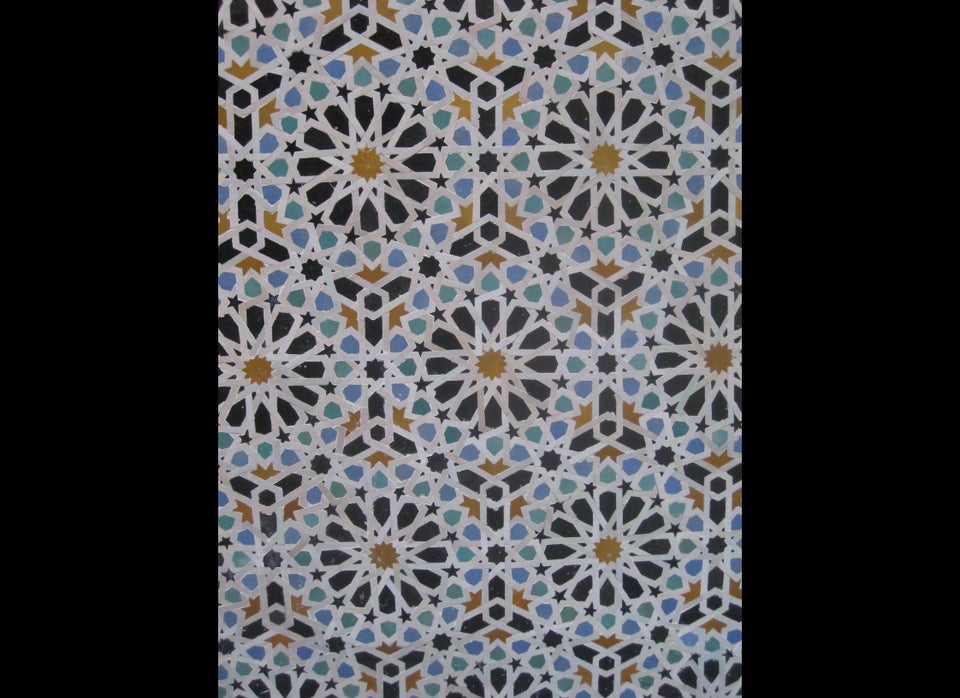Over the centuries, Jews, Romans, Berbers, Beats, Burroughs, Bowles and Yves St. Laurent have made Morocco their home. Its amazing culture blends Islamic, Judaic, Mediterranean and Gallic influences. In an increasingly homogenized world, Morocco retains a unique sense of place. I wanted to experience it lest the forces of globalization scrub its distinct colors.
Marrakech
Long before the jet set and hippies discovered it, Marrakech, the Pink City, was a crossroads of caravans and the center of an empire that spanned West Africa. Now, artists and culturati from around the world are restoring its riads (traditional courtyard homes) shopping its souks (markets) and making Marrakech home (or a second home).
I headed for Jama Al-Fana, the huge plaza adjacent to the mosque in the medina. Historically the center of Marrakech, it was once the spot for public executions -- an effective way to instill respect for the law. It is now a marketplace that comes to life at sundown with water sellers, musicians, dancers, snake charmers and all variety of food stalls. (I'm still trying to figure out what the fellow with pigeons and squirrels on a leash was all about.) It's also a happy hunting ground for pickpockets, hypes and touts who thrive on tourists. A fellow claiming to work at the Royal Mansour hotel where I was staying zeroed in on me as I arrived at the square and offered to take me to a Berber rug auction inside the souk. I decided it wasn't prudent to follow a stranger with bad teeth into a maze of alleyways. Instead, I wandered around the bazaar and had a snake charmer drape multiple venomous vipers around my neck.
The Royal Mansour is the world's first hand-made hotel. Fourteen-hundred craftsmen worked more than three years to realize King Mohammed VI vision for showcasing Morocco's unsurpassed craftsmen. Mosaics, carved cedar and plasterwork sumptuously detail the interiors of the lobby, common areas and riads where guests stay. Cost was no object in the construction, though it took more than money -- Dubai and the Gulf emirates have more money, but they couldn't build this. The Royal Mansour is a testament to the unique culture and exquisite crafts that are still very much alive in and unique to Morocco.
Dining on mouth-watering Mediterranean-Moroccan fare at the charming century-old riad Villa Des Orangers, I imagined Paul Bowles at repose in the clubby library and lounging in the courtyard garden under the orange trees. The cozy candlelit restaurant with its décor of leather and tobacco tones has the feel of an African lodge. This riad may well be the most romantic spot in Marrakech.
Twenty minutes from the old city is the suburban enclave of Palmerai, once a date grove. This is where I found esteemed interior designer and Marrekech grande dame Meryanne Loum Martin. She's known for her house party gatherings and salons at Jnane Tamsna, a stylish 24-bedroom luxury villa that is also her home. A favorite of celebrities, including Giorgio Armani, Brad Pitt, Donna Karan and David Bowie, you never know who will be at your dining table.
I lunched with Meryanne; her husband, the ethnobotanist and eco-activist Gary Martin; Italian Princess Letizia Ruspoli; and Vanessa Branson, sister of Richard and founder of the Marrakech Biennale. They filled me in on where to eat, where to shop (Sidi Ghanem, 33 Rue Majorelle) and even where to find a cheeky burlesque show (The Lotus Club). The Biennale is coming up in February, at the same time Merryanne will be hosting a TEDx talk.
Fes
The ancient city of Fes is the cultural, spiritual and gastronomic capital of Morocco and I couldn't miss it. Its medina -- a labyrinth of 9,000 alleyways, 1,000 neighborhoods and 500,000 residents -- is the world's largest pedestrian city and a Unesco World Heritage Site. The architecture, souks and street life evoke another millennium. Donkey carts have the right of way: loaded with tons of water and all manner of cargo you ignore them at your peril. Veiled women carry buckets to the hammam baths. The souks are segregated by trade: metalwork, furniture, clothing, food. Fes is renowned for leather work, and behind the shop stalls, men in knee-deep vats dye hides in the same manner they have used for centuries. The shopkeeper took me to a balcony overlooking the dye works, handing me a sprig of mint to mask the pungent odor.
The Riad Fes offers total comfort while staying in the medina. This Relais and Chateaux property has lovingly restored five classic courtyard homes in Spanish Moorish luxury. Its stylish restaurant is a favorite of the king. The chef -- a woman, as are the best chefs in Morocco -- combines traditional Moroccan cuisine, such as a sweet and savory pastilla, with contemporary Mediterranean touches.
A day trip from Fes took me further back in time to Volubilis, the best-preserved Roman ruins in North Africa. It's also the site of one of my favorite scenes from one of my favorite films, Patton, with George C. Scott as the general reminiscing about his past life fighting the Carthaginians 2,000 years ago. Gazing in silence upon its temples, colonnades and arches, I wondered if people at the time complained that ever since the Romans showed up every place looks the same.
A good guide is indispensable to get the most out of your trip. For an excellent one in Marrakech who knows the latest boutiques and designers as well as the vast souk, contact Hatim.
Heritage Tours Private Travel offers elite custom tours and guides throughout the kingdom.
